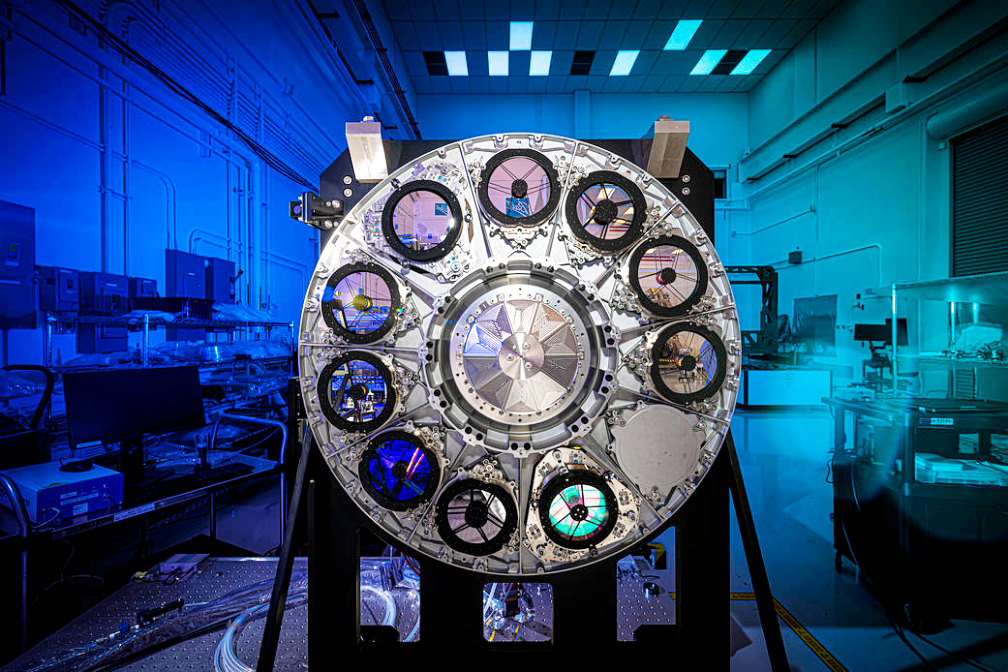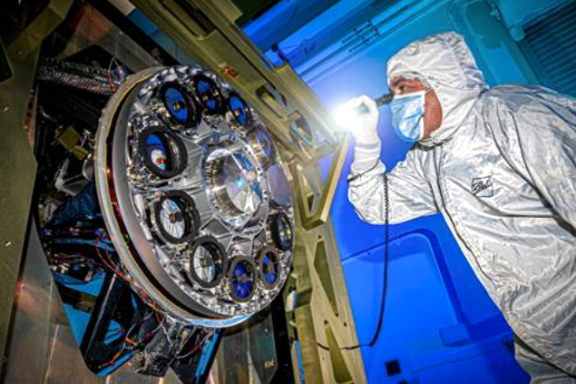

Ball Aerospace has successfully completed the alignment and integration of the Wide Field Instrument (WFI) opto-mechanical assembly for NASA’s Nancy Grace Roman Space Telescope — the company has moved into the functional testing of the opto-mechanical assembly and WFI integration, which is expected to be completed by mid-2023.

The alignment and integration of the opto-mechanical assembly includes structural integration, installing the alignment compensation mechanism that ensures precise focus of the large infrared focal plane detector, and integration of the element wheel. The element wheel rotates the WFI optical components (filters, prism and grism), which are used to perform imaging and multiple wavelengths and spectroscopy.

With an anticipated launch by mid-2027, the Roman Space Telescope (formerly known as WFIRST) will use its large primary mirror, spanning nearly eight feet, to capture images equal in quality to those of the Hubble Space Telescope but with a WFI field of view that is more than 100 times greater. This will enable the observatory to conduct comprehensive and efficient surveys of the infrared sky, answering high-priority scientific questions related to the evolution of the universe and the frequency of potentially habitable planets around other stars. (A video detailing the capabilities of this telescope is available at this direct link…
The completed opto-mechanical assembly provides the stable structure and thermal environment that enables the wide field, high quality observations of the WFI, developed by NASA’s Goddard Space Flight Center (GSFC). Functional testing of the WFI opto-mechanical assembly will be followed by integration with GSFC’s calibration and focal plane systems and then environmental testing for the completed WFI will be conducted through the first quarter of 2024, followed by delivery to GSFC.
“What the James Webb Space Telescope has done in terms of sharp, detailed views of the Universe, Roman will do in terms of scale,” said Dr. Alberto Conti, vice president and general manager, Civil Space, Ball Aerospace. “We just reached a significant milestone in the development of the instrument that will make these unprecedented wide-field views possible, helping to unravel the secrets of dark energy, discover exoplanets and other capabilities.”
Ball Aerospace’s work with NASA on the Roman Space Telescope continues a relationship that spans nearly 60 years. Ball Aerospace has played a role in all of NASA’s Great Observatories and built seven science instruments for the Hubble Space Telescope, as well as the advanced optical technology and lightweight mirror system for the James Webb Space Telescope.

